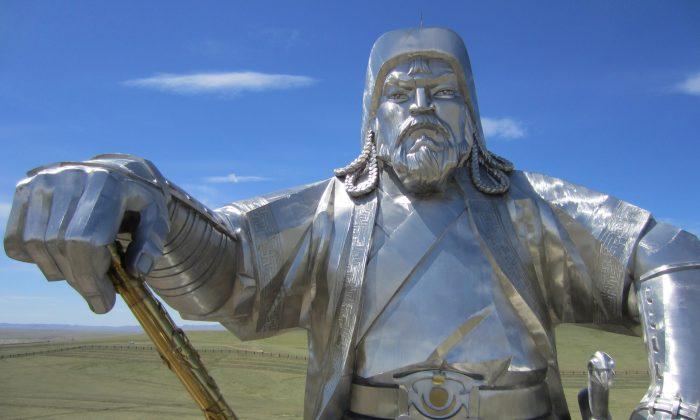Working with the state of Montana, the Department of the Interior (DOI) and the Crow Tribe Apsaalooke Nation enacted the Crow Tribe-Montana Water Rights Compact last month. The agreement will bring precious water to the Crow Tribe to help conserve a threatened native population.
The official signing took place at the Department of the Interior April 27. Secretary of the Interior Ken Salazar, Crow Chairman Cedric Black Eagle, and Gov. Brian Schweitzer of Montana all signed the compact.
“Today is an important day in Montana history,” said Gov. Schweitzer in a DOI press release. “The signing of the Crow-Montana Compact evidences the State’s dedication to successfully resolving both Indian and federal reserved water rights claims through settlement negotiations.”
Since the inception of the United States, relations with tribes changed directions many times. The latter part of the 20th century brought more focus on tribes, and now many officials help conserve tribes and reservations the same way they would a natural resource.
The historic compact is a major step forward in the Crow Tribal Water Rights Act of 2010, which was designed to overhaul the Crow Irrigation Project and bring clean drinking water to the Crow people.
“The Compact not only ensures delivery of a much-needed safe supply of water for the Crow community, but will also bolster their economic security,” said Salazar, in a DOI press release.
The Crow Reservation comprises approximately 2.3 million acres of land and is the largest Native American reservation in the state of Montana. There are 11,900 Crow members listed; 8,000 of those members live on the reservation.
April’s compact brings a closer end to more than three decades of legal bureaucracy and negotiations, as litigation over the tribe’s water rights began in 1975. Negotiations with the tribe and the state of Montana started in the 1980s, but it wasn’t until June 1999, that Montana reached an agreement with the Crow tribe and the compact could be ratified.
“Today is a significant day for the Crow people. We began negotiating the Crow-Montana Compact over a decade ago and with continued commitment by all of the parties, including the State and the United States, we were able to come together today and sign the Compact,” said Chairman Black Eagle in a DOI press release. “Water is life. This compact ensures that Crow people will have water and the necessary infrastructure for generations to come.”
The current utility that supplies water to the tribe is the Crow Irrigation Project. The irrigation system is currently in a state of disrepair and can’t reach the goal of supplying the Crow people’s demand, which includes farming and ranching needs, as well as residential needs. The water quality of the old system is questionable, and in need of redesign.
In late 2010, the Claim’s Resolution Act (Public Law 111-291) was signed by President Obama and authorized $131.8 million for the Crow Irrigation Project’s restoration, and another $246.4 million for improvement to water systems for other reservation communities. An additional $81 million was directed for tribal water administration, irrigation, and municipal water systems.
Additionally, the Crow Tribe Water Rights Settlement, covered in Title IV of the 2010 law, gave the DOI the power to execute the compact. Additionally, the settlement provides funding for renewable energy projects such as Yellowtail Afterbay Dam hydropower, clean coal projects, as well as other renewable energy projects, to boost power for reservations.
The Epoch Times publishes in 35 countries and in 19 languages. Subscribe to our e-newsletter.



